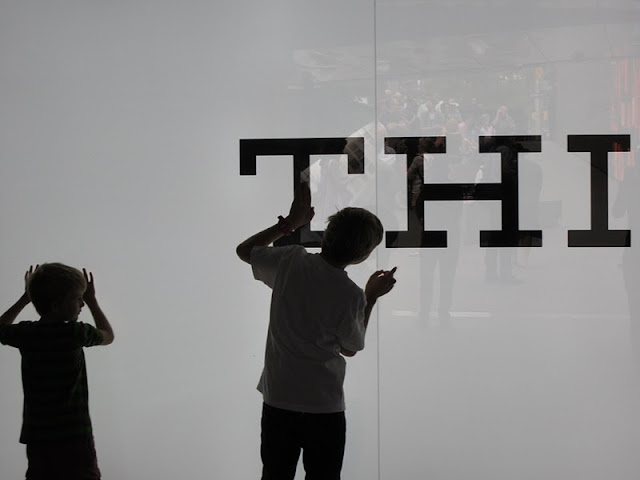"40 media panels become interactive touchscreens, transforming the space into a forest of discovery..."
 | |
| Mapping the gene sequence of rice |  |
I began to THINK
about how altering the genetic make-up of rice might make world work better.
"While each leap of progress requires its own intelligence, work and courage,
many of them are the result of a distinct, repeatable pattern.
The THINK exhibit explores how progress
is shaped through a common and systematic approach."
about how altering the genetic make-up of rice might make world work better.
"While each leap of progress requires its own intelligence, work and courage,
many of them are the result of a distinct, repeatable pattern.
The THINK exhibit explores how progress
is shaped through a common and systematic approach."
SEEING
MAPPING
UNDERSTANDING
MAPPING
UNDERSTANDING
BELIEVING
ACTING
40 interactive touch screens is pretty seductive. Does it help us THINK?
The only way out is to walk the gauntlet of screens enumerating IBM's accomplishment. And it's impressive.
"In the midst of the Great Depression, FDR signed the Social Security Act - creating a gigantic, nation-wide information problem with the stroke of a pen. Suddenly the US federal government needed acres of accounting machines to track the paychecks of every working American."
Who could provide the government with a way of keeping track this information? IBM
Who could provide the government with a way of keeping track this information? IBM
The implications of passing the Social Security Act from an accounting perspective must have been mind boggling. And there was a lot more...


























































 snap du jour (photo blog)
snap du jour (photo blog)




